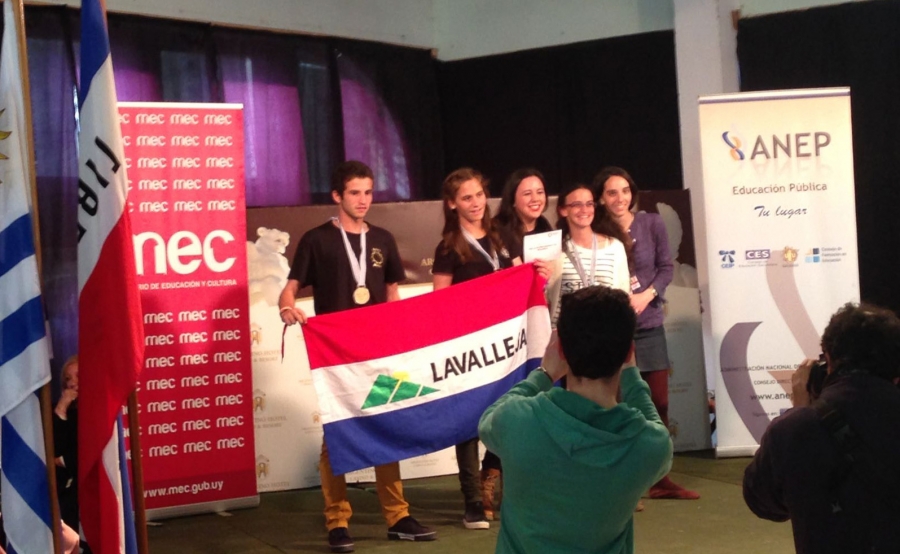Prize for Sustainability and Resilience in the Framework of the 13th National Science Club Fair

Since 2012, the SARAS Institute has participated in the National Science Club Fair organized by the Department of Scientific Culture of the Ministry of Education,
a non-formal education institute, in which children, young people, and adults can project their ideas and creativity by creating their own research project.
In this thirteenth edition, our Institute formed part of the jury for the category Colibri-science area. SARAS´s traditional recognition to Sustainability and Resilience was also awarded.
This year the recognition was granted to the Dexter Science Club of the Technical School of Minas, the Agriculture Annex No. 72 of the city of Minas in the Department of Lavalleja for the project “An Analysis of the Possible Contamination of the San Francisco Stream.” The team was composed of Irene Caballero and Nicolas Hernandez and facilitated by Solange Curbelo and Natalia Pereira.
Project Summary “An Analysis of Possible Contamination of the San Francisco Stream” – Science Club: Dexter. Members: Irene Caballero y Nicolás Hernández. Facilitators: Solange Curbelo y Natalia Pereira- Escuela Técnica de Minas- Anexo Agrario N° 72, Minas, Lavalleja.
The San Francisco stream is one of the busiest areas in the city during the summer months, given its proximity to populated areas and the availability of transportation to and from the spot. One of the reasons why we became interested in studying the stream´s water quality is because last year the IDL hung signs in certain areas stating that the quality of the stream water was safe for swimming. Our main objective was to study the different types of stream contamination based on chemical, physical and mainly biological indications. We initiated our study with the hypothesis that given the anthropogenic pollution observed at plain sight, the stream water and its surroundings were contaminated. Biological samples were taken and physical-chemical analyses of the water were carried out. We divided the course of the stream that crosses the city into four zones to obtain a more exhaustive analysis. According to the results obtained up until September, we can confirm that the stream is potentially contaminated.
